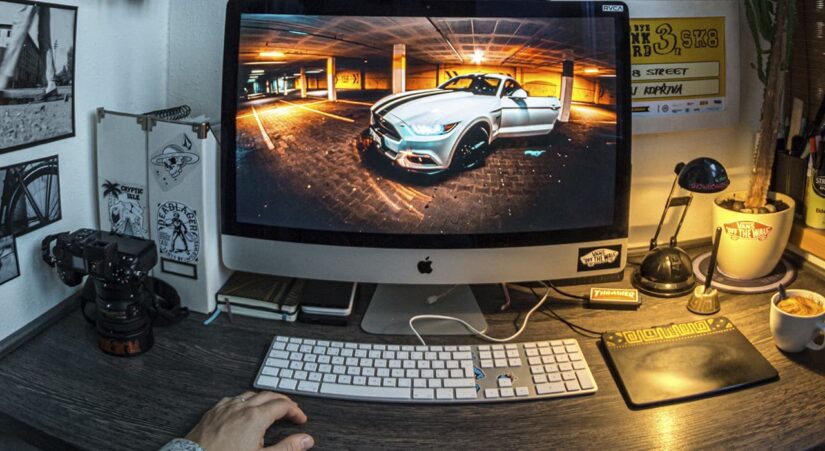New media art is a loose and ill-defined category that encompasses performance, installation and sculpture, as well as digital and conceptual art. Against the backdrop of a consumer culture that increasingly revolved around film and television, new media art emerged in the mid-twentieth century as a way to open up creative space in the field of electronic communication technologies. As the technologies available for work proliferated, new media art branched out to reflect innovations in film, computers, robotics, and even biotechnology.
While the list of prominent new media artists is constantly growing, we’ll take a look at some key figures worth exploring for those who want to learn more about the field.
Nam June Paik
Arguably the founder of new media art, Nam June Paik came to prominence in the sixties with a series of bizarre screen sculptures and installations. Although a truly multimedia artist who often experimented with music and performance, video and television continued to occupy him throughout his career, and he made the multi-screen installation his signature artistic gesture.
Vera Frankel
A master storyteller who began life as a printmaker and poet, Vera Frankel’s artistic practice has become known for its narrative dimensions, combining film, photography, sculpture, and print in the service of social and political critique.
Alexey Shulgin
Alexey Shulgin, who goes by Shulgin, often incorporating website design into his artistic practice, typically combines elements of public engagement with a wry sense of humor.
Raphael Rosendahl
Raphael Rosandal is an artist for whom the Internet is at once a brush, a canvas and a subject. He even tattooed the word INTERNET on the inside of his lower lip.
Pierre Huyghe
An artist whose work spans film, sculpture, performance, and even living organisms, Pierre Huyghe has been exploring the ethics and aesthetics of new media landscapes since he first came to the attention of the art world in the late nineties. Perhaps most famously, No Ghost, Just a Shell, 1999-2002, saw Huyghe and Philippe Parreno acquire the rights to the main anime/manga character Anly, opening the door to what Parreno called an “aesthetic of alliances” between over a dozen artists who would breathe life into her empty shell.
Lawrence Leck
Since childhood, Lawrence Leck has been interested in the universe. With a background in architecture and a portfolio that spans game design and immersive simulation, he is certainly well positioned to realize speculative futures and incredible parallel realities.
Mario Klingemann
In a vision of what the future holds for AIDOL, machine learning artist and artificial intelligence pioneer Mario Klingemann is using deep learning and neural networks to blur the lines between human and machine creativity.
A resident artist at Google’s Arts and Culture Lab, Klingemann was one of the first to use their DeepDream and Style-Transfer tools as artistic media. His work is at the forefront of technological innovation and at the forefront of the debate surrounding the nature of AI and its ability to create.
Petra Cortright
A kind of post-Internet Monet who is just as comfortable exhibiting in a gallery as on YouTube, Petra Kortright’s floral arrangements may look painted at first glance, but a closer look reveals a practice rooted in software, even if the end result resembles the work of a real brush.
Hito Staerl
One of the most influential artists of our time, Hito Staerl is well known for her essays, film and documentary work. In her own words, her art is about “changing the meaning of images in the flow of media globalization.”
It can be argued that any art that experiments with innovative tools and techniques can be classified as new media art. But although acrylic paint is a more recent invention than film, the changes it has brought to the art world are more subtle. What is “new” in new media art is less tangible than mere technophilia and will inevitably evolve over time. What unites the artists on this list is not a specific medium or even a shared commitment to the newest – just look at Cortright’s everlasting flowers – but a desire to use the full range of technologies, old and new, to create, explore, and provoke.
